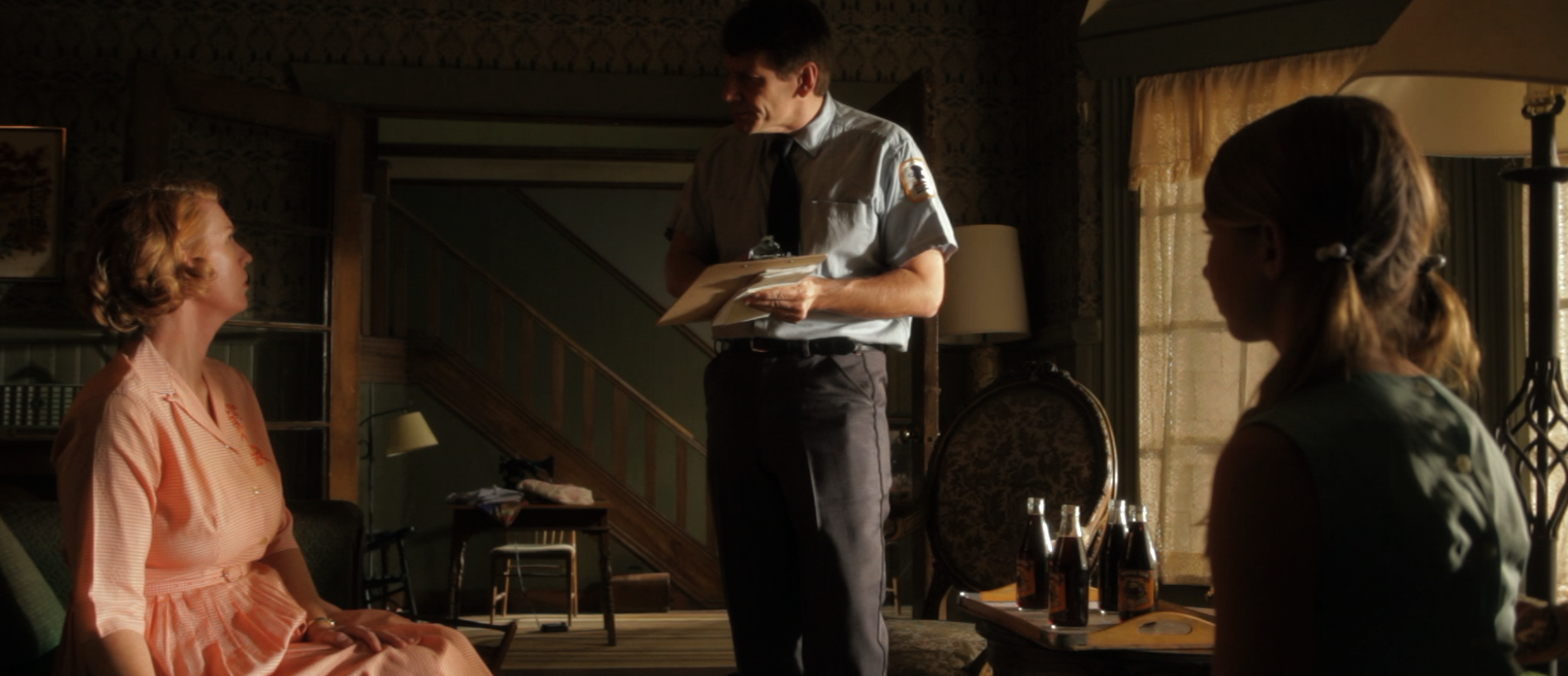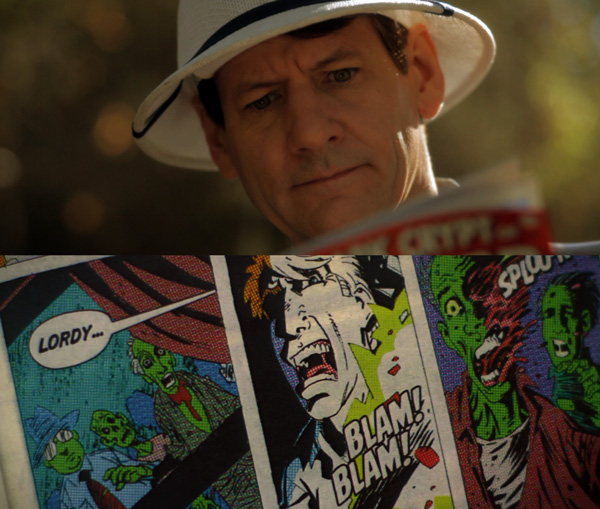
15 Nov to laugh or to scare?
greetings friends!
I’m extremely happy to let you all know that CERTIFIED was selected by the prodigious site www.ShortoftheWeek.com.
they wrote a really great review of the film, so please head on over and give it a read here.
they asked me some really great questions about balancing the tone of the film. the film is kind of a horror film, but also a comedy… and it never really veers to far in either direction.
when I set out to make this film, I didn’t approach it as a horror film – to me it was always a supernatural drama. the tone I wanted to strike was something like an episode of “The Twilight Zone” or “The X-Files,” both of which often seemed to have a good mix of both creepy and funny. to do this I focused on two main elements: the perspective and the pacing.
the original story “The Open Window” has a third person narrator, but while this device works well in prose, I’m not a fan of it in cinema. so I changed the story to be told from two different perspectives. at the start the audience experiences the film through the eyes of Frank, the very nervous postman.
the first shot of the film is Frank looking at the comic, then it cuts to his POV the comic, and back to him – so the audience knows that they are going to be experiencing the story from his perspective. the film continues to unfold from his rather subjective point of view. that is, until he runs away screaming.

at that point there’s a shift and we begin to focus on the girl, Alice. but it’s not until the final shot, when she breaks the 4th wall and looks directly at the audience do we realize it’s been her story all along.
because we are seeing the film through the postman’s eyes we laugh at the difficulty he is having delivering the letter, and then are scared for him when the “zombies” approach. it feels real to us, because it feels real to him. Once the shift in perspective happens, we are free to laugh at how this clever girl fooled both him and us.
the second element that most influenced the tone of the film is the pacing. by varying the length of shots, speed of performance, and both the tempo and character of the music I was able to transition back and forth between comedy and horror.
a great example of this is when Mr. Sappleton comes home and grabs the soda. we’ve just come off a section of very fast cuts and very loud music as the “zombies” approach and Frank runs away. now there is a break in the action and the music becomes less intense and the shot slowly follows the soda up to his mouth. this builds the tension and horror… but at the end of the shot, instead of a gruesome creature and a scare – we learn that he’s a real live person. by playing with the audiences expectation we create a moment of relief and humor.
a big part of why this works is due to the brilliant work of our composer Jeff McDonough. His score is funny, creepy, and even frightening – all at just the right moments.
of course, Saki’s amazing original work is really the starting point for the tone… the trick for me was figuring out how to make it cinematic.
what about you all, any favorite moments of prose you’ve seen in cinema?
-Luke


Erin Hickner
Posted at 17:15h, 19 NovemberI enjoyed reading your thought process on your blog and your review. I found the process of lens and camera choice fascinating in order to make the scene more real to the audience. You are aresome dude 🙂
Luke
Posted at 04:28h, 20 Novemberthanks Erin =)